Most crossover SUVs can’t really cross over very much.
They look like rugged, off-road-ready SUVs, but they’re really just high-riding cars, with light-duty AWD (usually optional) and not much more off-road capability than the cars they are based on.
Except for this one.
The Compass is a compact-sized, two-row crossover SUV that’s based on a car chassis – like other crossovers – but with capability comparable to truck-based SUVs.
It offers a 20:1 gear-reduction feature that operates like a truck-type 4WD system’s two-speed transfer case – but without the additional weight of a two-speed transfer case.
It also offers almost nine inches of ground clearance – in Trailhawk trim. Combined with its more rugged-than-most AWD system this Jeep can tackle terrain that’s off limits to other crossovers, yet still behaves with car-like civility when the terrain is paved.
Prices start at $21,595 for the base Sport trim with front-wheel-drive and a six-speed manual transmission (something else the Jeep offers that’s becoming hard-to-find in other crossovers).
A top-of-the-line Trailhawk with the most-capable version of the AWD system (which includes a Rock Crawl mode) and the additional ground clearance, plus off-road M/S-rated tires, tow hooks, skid plates and various trim upgrades, stickers for $28,945.
There’s almost nothing that’s directly competitive with the Compass as far as capability – that isn’t also a truck-based SUV.
And much more expensive.
The next-closet thing is probably the Subaru Crosstrek – which can match the Jeep’s ground clearance and which also comes standard with a very capable AWD system (the Jeep’s is optional) and costs a bit less ($21,895) to start.
But the Soobie hasn’t got the gear-reduction feature, the adjustable terrain settings or the trail-rated tires.
It also can’t tow 2,000 lbs.
The Jeep can.
An Upland special edition variant has been added to the mix; it includes the Trailhawk’s 17-inch wheels, tow hooks, skid plates and front clip – but not the Trailhawk’s AWD system.
It’s designed to look rather than play the part.
There’s also a new High Altitude Appearance Package for the Limited trims. This one comes with 19-inch wheels, an upgraded 8.4 inch UConnect touchscreen, HID lights and gunmetal/tungsten interior trim.
Truck-based SUV capability – without the truck based SUV’s price tag.
Three transmission choices.
Available manual transmission – both FWD and AWD versions.
UConnect system is one of the best available- at any price, in any class of car, crossover or truck.
WHAT’S NOT SO GOOD
Slow-pokey acceleration; zero to 60 takes 10-plus seconds.
Fairly thirsty; expect to average low 20s – not far off the average of larger/more powerful truck-based SUVs packing V8s.
Auto-start/stop system is standard, like it or not – even if you don’t like the engine shutting itself off at every red light, then chugging back to life when the light turns green.
Every compass comes with a 2.4 liter four cylinder engine that produces 180 horsepower, but you have three transmission options – as well as the option to choose front-wheel-drive or all-wheel-drive.
The base trim comes with the 2.4 liter engine and a six-speed manual transmission; a six-speed automatic is optional. Models with the optional AWD system come with either the manual or a nine-speed automatic.
Trailhawk models come with a more aggressive 4.34 final drive ratio (to provide additional low-speed leverage) vs. the 3.73 ratio that’s standard with other Compass trims.
Regardless of combo, mileage is about the same: 23 city, 32 highway with the manual and FWD; 22 city, 30 highway with the nine-speed automatic and AWD.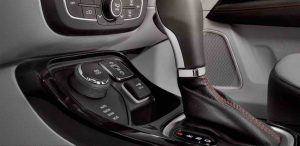
The Compass can tow a respectable for its size/class 2,000 lbs. The Subaru Crosstrek maxes out at 1,500 lbs.
Another thing the Compass comes with is two batteries – to deal with the added electrical load imposed by the auto-stop/start system. There’s a 500 amp main battery and a secondary 150 amp battery. Dual batteries aren’t new; heavy-duty trucks have been so equipped for decades, especially diesel models – which impose high cold-cranking demands on batteries because of their very high compression.
But the Compass has different demands.
Jeep (like every other car company) installs auto-stop/start to tweezer fractional per-vehicle MPG gains for the sake of complying with government fuel-efficiency fatwas. But the “solutions” arrived at to achieve these government-mandated gains impose a whole slew of new costs – including two batteries that will likely be shorter-lived batteries, because of the charge/discharge cycling (hard on batteries) that comes with all that engine stopping and starting.
It’s worth mentioning that auto-stop/start is not an option you’re free to choose to buy if you want it – or not. For the pretty obvious reason that most people would choose not to buy it.
Because there’s little, if any, benefit to the owner.
Auto-stop/start is another example of “features”for which there is no market demand but which the government effectively demands we pay for.
Both up front – and down the road.
ON THE ROAD
The Compass isn’t speedy, but it is immensely capable.
Its AWD system may not have a two-speed transfer case, as “real” (truck-type) 4WD systems have, but the Jeep achieves the same result without it, via the 20:1 crawl ratio built into the transmission.
All versions with the AWD system get driver-selectable terrain modes (Auto, Snow, Sand and Mud) which optimize throttle tip-in/shift points and the traction control system to give you maximum . . . traction.
The Trailhawk gets a fifth mode, Rock Crawl – designed for just that. It can also traverse nearly two feet of water, too.
You can take this Jeep off-road; almost anywhere a truck-based 4WD SUV could risk – especially the Trailhawk version, which has an extra margin of clearance, plus the ground-grabbing 17-inch Falken Wild Peak knobbies.
And it does this in a relatively small, affordably priced package.
Cast around for a 4WD SUV that’s similarly capable and you’ll be spending a lot more than the $23k or so an AWD Compass will set you back. Even the $28k or so Trailhawk is a relative bargain compared with what that amount of money would buy you in a “real” 4WD SUV.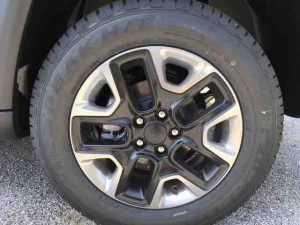
The one thing the Compass doesn’t do very well is pass on paved roads. There is just enough engine to get you going. Not much left to get you going faster, either.
Also, the nine-speed automatic (AWD versions) is programmed to please Uncle, which means it is programed to upshift to its top three overdrive gears as soon as it can without actually bogging the engine.
But it often comes close to bogging it – all for the sake of MPGs, to make Uncle happy.
This can be countermanded by keeping your right foot down – which the shift programming actually encourages, because otherwise the already slow-moving Compass moves even slower.
But the end result of that is the engine gets worked harder – and so uses more fuel in real-world driving.
Keep in mind: New cars are programmed to do best on government tests – not in real world driving. The whole thing is a stupid game – and we’re the losers.
Note also that the Compass delivers its best-case EPA mileage numbers with the six-speed manual transmission. Not with either of the available automatics. You’ll also get the best real-world performance with the manual, as well as greater control – always an important consideration but arguably especially so in an off-roader.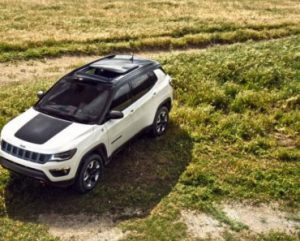
A neat thing about the Compass is its tow-ability. Not how much it can tow, but that it can be easily towed, as behind an RV. Because it has a neutral range that allows the wheels to freewheel.
AT THE CURB
Though small – the Jeep is just 173 inches end to end – it has lots of room, including 38.3 inches of backseat legroom, more than many current (and larger) mid-sized sedans have in a package that’s about a foot shorter, end to end. Which makes it a great city/suburban vehicle as much as an off-road vehicle.
It also has much more room for cargo than most cars: 27.2 cubic feet behind its second row of seats and 59.8 cubic feet with the seats folded down. This space efficiency is one of the major reasons for the huge popularity of crossovers.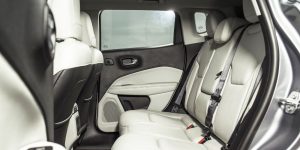
The taller profile of the crossover layout also gives the Jeep more headroom (39.2 inches in the first row, 38.5 in the second row) than a typical lower-riding car, which is another reason for the popularity of this layout.
Other crossovers are similarly or even more space-efficient, of course. But they can’t match the Jeep’s capabilities.
Which includes angles of approach (16.8 degrees), departure (31.7 degrees) and breakover (22.9 degrees) that are unmatched among crossovers and – per above – equaled only in much more expensive SUVs.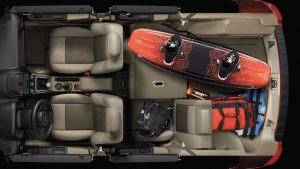
So it not only looks like a Jeep – it’s worthy of the Jeep name.
As part of the FiatChrysler family, the Compass comes with Chrysler’s superb UConnect system, the centerpiece of which is a large 7 inch LCD display (8.4 inches is optional) that’s easy rather than distracting to use because of the large buttons and comprehensible menus. The system (both versions) come standard with AppleCarPlay and Android Auto; you can access your Compass via your phone and also use your phone to find your Compass in a crowded parking lot.
The system also offers Off Road pages, which includes topographical mapping.
Jeep could have put a stronger engine in the Compass – something along the lines of the 2.0 liter turbo four (270 horsepower) that’s become available in the one-size-larger Cherokee (for 2019). It would certainly have addressed the many criticisms about the slowness of the Compass.
But then you’d have a turbocharged engine- and with it, the extra cost/complexity. The Compass’ 2.4 liter engine is arguably perfect for a vehicle such as this – a rugged little runabout that isn’t designed to get there quickly, just designed to get there . . . regardless of conditions.
A diesel, of course, would be even more perfect. The low-end torque, the long-term durability – with the plus of much better fuel economy. But we can’t have that. Not because Jeep doesn’t have a diesel – or doesn’t want to offer it. Jeep offers diesel engines in almost every model it makes.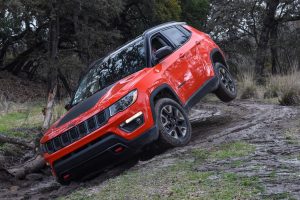
Just not here.
Because of Uncle, again.
Errata: Be aware that the Trailhawk’s off-roady tires are noisier on-road and will wear faster than the all-season tires that come with other trims. Serious capability entails some compromises.
Also: You can temporarily disable the auto-stop/start system by pressing a button on the center console. Unfortunately, this has to be done every time you go for a drive. There is no way to permanently shut it off, forever.
THE BOTTOM LINE
Though there are lots of crossovers on the road, none in this class can match the Compass off-road.
. . .
Got a question about cars – or anything else? Click on the “ask Eric” link and send ’em in!
If you like what you’ve found here please consider supporting EPautos.
We depend on you to keep the wheels turning!
Our donate button is here.
If you prefer not to use PayPal, our mailing address is:
EPautos
721 Hummingbird Lane SE
Copper Hill, VA 24079
PS: Get an EPautos magnet (pictured below) in return for a $20 or more one-time donation or a $5 or more monthly recurring donation. (Please be sure to tell us you want a sticker – and also, provide an address, so we know where to mail the thing!)
My latest eBook is also available for your favorite price – free! Click here. 


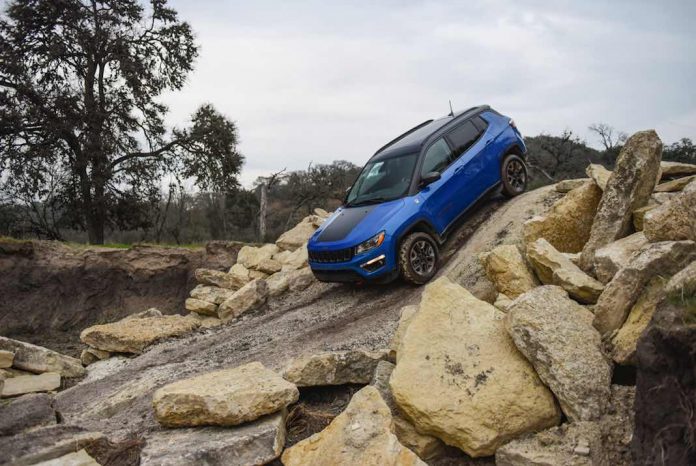


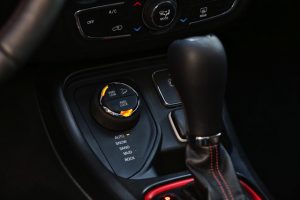
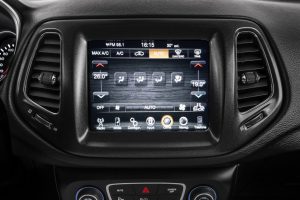
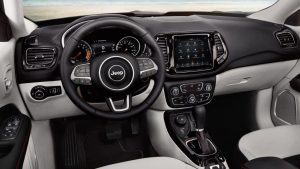
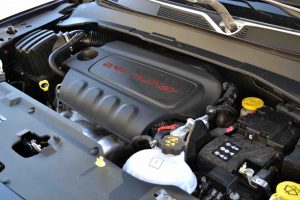

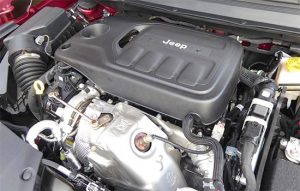







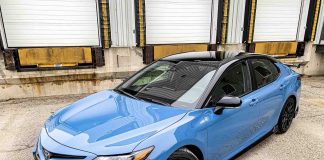
Regarding: “Because it has a neutral range that allows the wheels to freewheel.”
My brother in law bought a 2014 Jeep Cherokee because he thought he could flat-tow it behind his RV. And, in theory, he can. But then he discovered that the Jeep needs a modification so the the electric steering can function when under way. Otherwise the towed vehicle will wobble violently when moving down the road. In order to enable the “electric steering while being towed” function, and not deplete the Jeep’s battery, he has to raise the hood and __install a fuse!!__ to supply power from the RV towing harness. Just sayin’, . . .
https://community.fmca.com/topic/8903-important-towing-information-2014-2016-jeep-cherokee/
Spare me.
Offtopic: Eric, did you see the humorous release of the Chevy 2020 2500? Crowd at silverado forums unanimously gave it a thumbs down. I don’t think Chevy has any car nor truck people left in design. People will be voting with their wallets, not to mention Ram got Truck of the Year in a lot of places.
A relative of a coworker says that GM now has young people with only 2-4 years of industry experience as program managers. So yeah, you’re going to get vehicles like the new 2500.
My favorite overlooked usability “feature” of the Silverado pickups is their new two-way tailgate. It’s awkward to use, especially when trying to close it when the inner gate is open in the “step” position. They also have a grab handle on the side of the bed to help you climb up into it (Ford has theirs in the tailgate itself). So if you had deployed the handle, then closed the tailgate, you can no longer drop the handle back into the stowed position because it doesn’t clear the top of the tailgate. You have to reopen the outer tailgate in order to get enough clearance to put the handle away.
Did no one test this??
Smells like GM working around a patent, probably Ford’s.
Is it possible for the driver to disable the auto stop/start “feature”?
What if you’re stuck in a traffic jam on the interstate or stuck in a snowbank in 20 degree weather and you need to idle so you can have heat for four or five hours?
Hi X,
I’m sure there’s a hack… but it’s not something the factory offers and I doubt a dealer would assist, either, out of fear of repercussions from “corporate.” The good news is, it’s not illegal – yet – to disable it, if you can figure out how…
X,
“What if you’re stuck in a traffic jam on the interstate or stuck in a snowbank in 20 degree weather and you need to idle so you can have heat for four or five hours?”
That’s a really stupid question to ask X.
You get frostbite, hypothermia, and eventually die.
What part of SAFETY DO YOU NOT UNDERSTAND?
Well we have regulators that make cars safer in crashes by making them harder to see out of increasing the number of crashes. That’s the mentality of the bureaucrat and technocrat.
You will be able to disable the ESS permanently, but it will require a tuner or other hack.
On the Wrangler it can be disabled by unplugging the driver’s side hood open sensor. That sensor is there specifically to disable the ESS if the hood is open. I imagine that it’s the same in other Jeep models, although you’ll have to live with a dash warning light.
I’d probably blow my engine within a year if it had start stop as I do the “stoplight shuffle” all the time.
I haven’t seen it myself, but rumors are that you unplug the start/stop disable switch then jumper the connector so the computer thinks you’re pushing the button all the time.
My Volvo XC60 has the Auto Stop-Start “feature”. According to the manual, it will not engage below 40 degrees F. Also, although it cannot be permanently disabled, you have the option of pushing a button on the dash to disable it. It then re-enables the next time you start the engine with the Start button. The Stop-Start feature is absolutely traumatic for me. I grew up driving shitty old cars in the frozen wastelands of rural Quebec. Before cell-phones. For me, an engine that suddenly stops unbidden is a terrifying event because in my nightmare fantasy, it usually leads to frostbite, wet clothes, and an aching back. And a lost night. It was bad enough when I was 20. No thank you. Idjits!
All it takes is to disconnect the hood open sensor. It will trigger a dash light but the ESS will be disabled.
That would be a super nice vehicle, if it came with a V6. sigh…….
Looks like way too much overlap, both with Jeep’s Renegade, and Cherokee. The previous generation Compass was a market flop, from the day it was introduced. And I got a bad feeling about this one too.
My advice for Jeep……
“Don’t go chasing waterfalls
Stick to the rivers and lakes that you’re used to”
😉
Hi Mike,
It actually sells really well (see here: http://carsalesbase.com/us-car-sales-data/jeep/jeep-compass/ ). The size/capability/price seem to be just right for lots of people!
Do the rear seats actually fold down FLAT, or do they remain at a slight angle or a step above the rear-most cargo deck ???